4 Moves That Build Strength and Reduce Injury Risk After 50
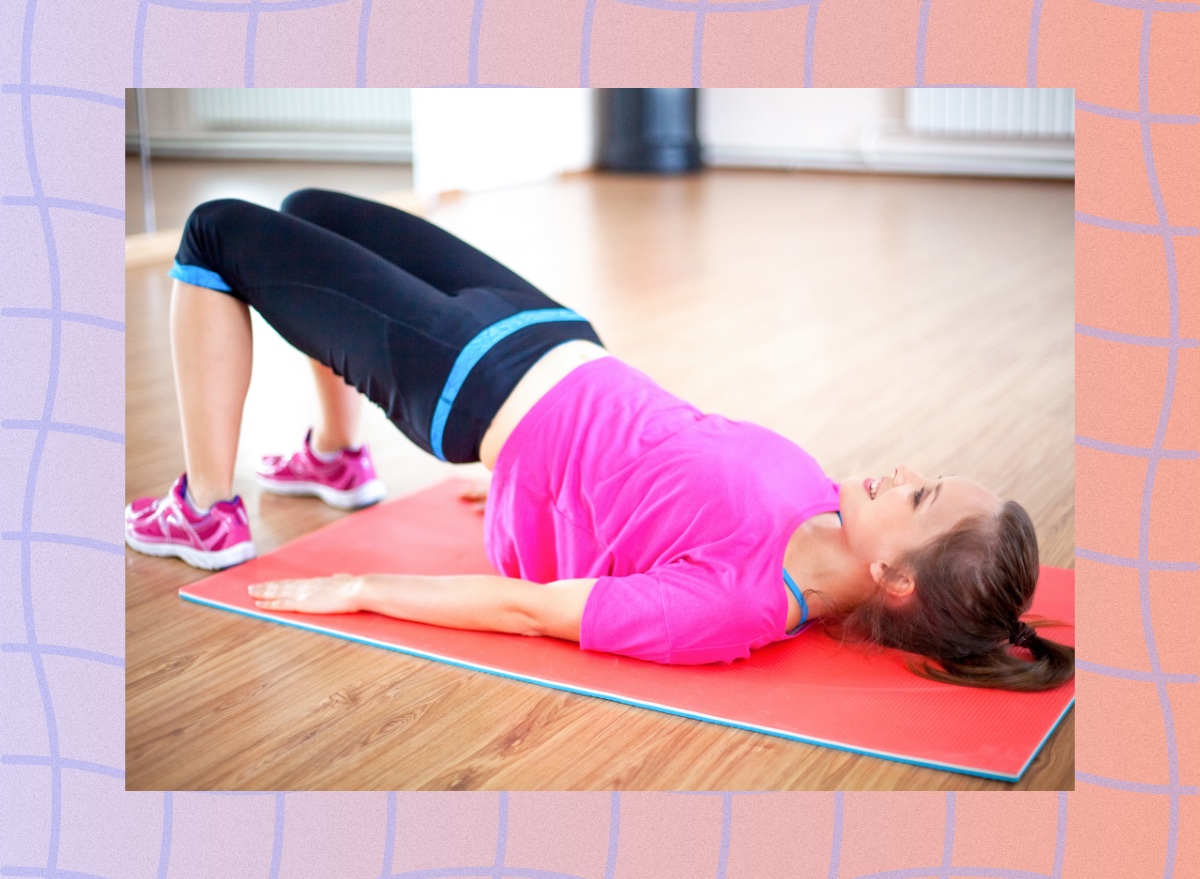
Aging doesn’t have to mean slowing down. One of the most effective ways to maintain your independence, stay active, and sidestep injuries as you age is to build strength; intentionally and consistently. Strength training improves your body’s resilience by reinforcing the muscles, bones, and joints that protect you during daily movements, sudden missteps, or unexpected demands on your body.
The key isn’t just to lift heavy or grind through the same workouts you did in your 30s; it’s to move smart. A well-designed program for folks over 50 emphasizes compound movements that train multiple muscle groups together and unilateral (single-side) exercises that restore balance and coordination. These movements help correct muscle imbalances, improve stability, and increase overall function, essential ingredients for avoiding common injuries like falls, muscle strains, or joint overuse.
In this article, we’ll break down four essential strength moves you can add to your weekly workouts. Each is designed to help you get stronger, move better, and lower your risk of injury with age. Let’s get to it!
Move: Step-Ups
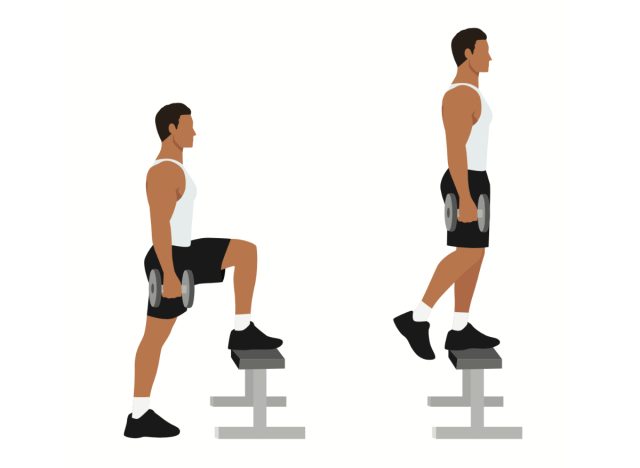
Step-ups are a very beneficial unilateral movement. They target your legs and glutes while challenging balance and coordination—two key components that naturally decline with age. They also mimic real-world actions like climbing stairs or stepping onto a curb, making them an excellent “functional” strength builder that supports daily activities.
Muscles Trained
- Quads
- Glutes
- Hamstrings
- Core (stabilizers)
How to Do It
- Stand facing a sturdy bench or box (about knee height).
- Place your right foot on the platform, pressing through your heel.
- Drive your body upward by pushing through your right leg until you’re standing tall on the box.
- Slowly lower your left foot back to the ground, keeping control.
- Repeat all reps on one side before switching to the other.
Recommended Sets and Reps: Complete 3 sets of 8 to 10 reps per leg. Rest for 60 seconds between sets.
Best Variations
- Dumbbell Step-Ups
- Low Box Step-Ups (for beginners)
- Lateral Step-Ups
- Step-Downs
Move: Dead-Bugs
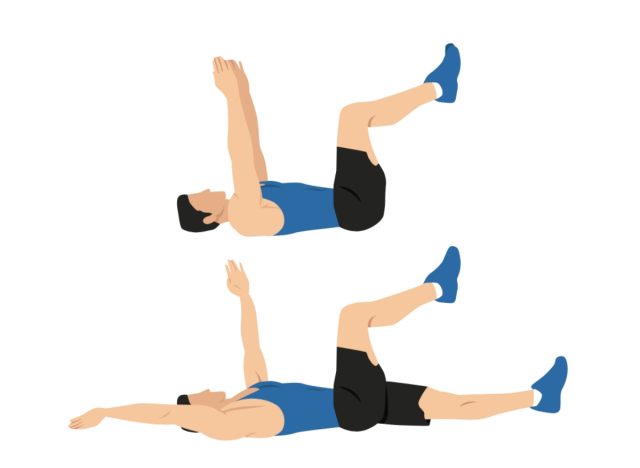
Dead bugs are a top-tier core stability exercise. They reinforce coordination between your limbs and your core, improve spinal alignment, and teach you how to stabilize your trunk while moving your arms and legs, which is essential for posture and injury prevention. Plus, they’re low-impact and easy on the back.
Muscles Trained
- Deep Core (transverse abdominis)
- Hip flexors
- Shoulders (isometric stabilization)
How to Do It
- Lie flat on your back with arms extended toward the ceiling and knees bent at 90 degrees.
- Press your lower back into the floor—this is your start position.
- Slowly extend your right arm and left leg toward the floor.
- Keep your core braced and don’t let your lower back arch.
- Return to the start, then switch sides. That’s one rep.
Recommended Sets and Reps: Complete 3 sets of 10 to 12 reps per side. Rest for 30 to 45 seconds between sets.
Best Variations
- Weighted Dead Bugs (light dumbbells)
- Resistance Band Dead Bugs
- Wall Press Dead Bugs
- Bent-Knee Marching Dead Bug
Move: Glute Bridges
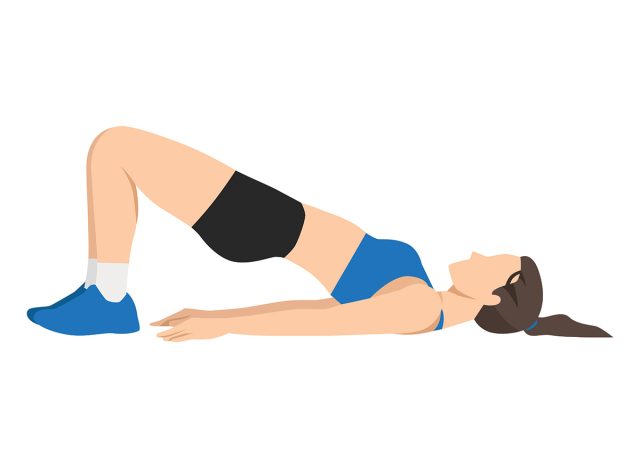
Glute bridges activate and strengthen the glutes—your body’s largest and most powerful muscle group. Strong glutes support your hips and lower back, reducing the risk of pain and injury, especially during walking, standing, or lifting. They’re also great for counteracting the adverse effects of extended sitting hours.
Muscles Trained
- Glutes
- Hamstrings
- Lower back
- Core
How to Do It
- Lie on your back with knees bent and feet flat on the floor, hip-width apart.
- Brace your core and press your heels into the ground.
- Squeeze your glutes and lift your hips until your body forms a straight line from shoulders to knees.
- Pause for a second at the top.
- Lower slowly and repeat.
Recommended Sets and Reps: Complete 3 to 4 sets of 12 to 15 reps. Rest for 45 to 60 seconds between sets.
Best Variations
- Single-Leg Glute Bridge
- Glute Bridge with March
- Elevated Glute Bridge (feet on bench)
- Banded Glute Bridge
Move: Landmine Press
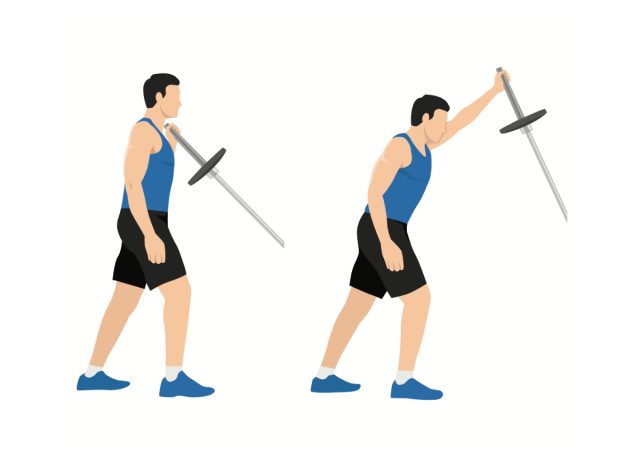
The landmine press is a shoulder-friendly upper-body push that trains strength and stability. Thanks to its arc-like pressing path, it places less stress on the shoulder joint than overhead presses, making it ideal for folks over 50. It also engages the core and trains anti-rotational strength.
Muscles Trained
- Shoulders (deltoids)
- Chest
- Triceps
- Core (anti-rotation)
How to Do It
- Place one end of a barbell in a landmine attachment or the corner of a wall or squat rack.
- Hold the other end with one hand at shoulder height.
- Stagger your stance and brace your core.
- Press the bar upward and slightly forward.
- Lower with control and repeat all reps on one side before switching.
Recommended Sets and Reps: Complete 3 sets of 8 to 10 reps per arm. Rest for 60 to 75 seconds between sets.
Best Variations
- Half-Kneeling Landmine Press
- Two-Hand Landmine Press
- Landmine Push Press.